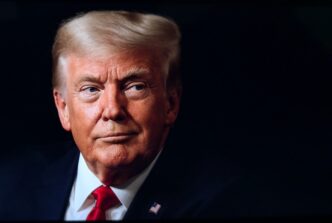Executive Summary
The Story So Far
Why This Matters
Who Thinks What?
Indian markets experienced a rally on Monday following Prime Minister Narendra Modi’s announcement of new tax cuts, which are expected to provide a boost to the domestic economy despite ongoing U.S. tariffs. The Nifty 50 index advanced by 1%, while the BSE Sensex saw an increase of 0.84%. In currency markets, the U.S. dollar depreciated by 0.18% against the Indian rupee.
Tax Reform Details
The tax reforms stem from Prime Minister Modi’s Independence Day speech on Friday, where he emphasized self-reliance and proposed a series of financial changes. New Delhi plans to implement a two-rate structure of 5% and 18% under significant revisions to the Goods and Services Tax (GST) regime. This new structure will abolish the previous 12% and 28% levies that were applied to certain items.
These reforms are designed to simplify tax compliance, reduce rates, and modernize the GST framework to foster economic growth. Industry executives anticipate that measures such as rate rationalization into two slabs, reduced tax burdens for micro, small, and medium enterprises (MSMEs), cuts on essential goods levies, and technology-driven processes will encourage greater investment.
Impact on Auto Industry and Broader Economy
The Indian autos industry is projected to be a key beneficiary of the new tax policies, particularly after a period of sluggish performance. Sales of passenger vehicles in India grew by 4.2% in the 2024 calendar year, marking the slowest growth rate in four years. Following the announcement, auto sector stocks saw increases during Monday’s trading session, with Maruti Suzuki India adding 8.75% and Hyundai Motor India rising by 8.15%.
The Reserve Bank of India forecasts the nation’s economy to grow by 6.5% in the 2025-2026 fiscal year. Prime Minister Modi’s tax overhaul is anticipated to bolster India’s economy amid what is described as deep geopolitical uncertainty, partly attributed to Washington’s “reciprocal tariffs.”
Geopolitical Context and U.S. Tariffs
India has been in the focus of President Donald Trump’s administration due to its continued purchases of Russian crude oil. In response, Washington has imposed an additional 25% levy on Indian imports, bringing the total duties to 50%, which are scheduled to take effect at the end of this month.
India’s economic narrative is predominantly driven by domestic consumption, with exports contributing a relatively smaller portion. Domestic intake remains one of the most compelling indicators closely monitored by investors and is the primary driver of economic growth within the country. A significant decline in inflation has also improved prospects for stable consumption growth.
In summary, the Indian markets reacted positively to Prime Minister Modi’s new tax cuts, which aim to stimulate the domestic economy by simplifying the tax structure and boosting consumption and investment. This economic initiative comes as India navigates geopolitical challenges, including the imposition of additional tariffs by the United States.








